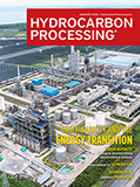Two ITA Airways routes to be powered by SAF
Rome Fiumicino Airport is increasing the availability of sustainable aviation fuel (SAF), an aviation biofuel made from renewable raw materials capable of supporting the reduction of CO2 emissions in the aviation sector.
The Leonardo da Vinci airport has become the first Italian airport to employ SAF, allowing ITA Airways to use it on the airline’s first 10 flights on 15 October 2021. From tomorrow, it will further increase distribution so that, throughout 2022, ITA Airways will be capable of powering two routes (Rome-Venice and Rome-Barcelona) as part of its decarbonization project.
Around 3,000 tons of jet fuel + Eni SAF (fuel blended with renewable raw material components) came from the Eni refinery in Taranto to the port of Civitavecchia, where it was unloaded at the coastal depot of SODECO (part of the Ludoil Group), which directly supplies Rome Fiumicino Airport. This is a further step towards the expansion of Aeroporti di Roma's commitment to sustainability and decarbonization of the sector, given that Rome Fiumicino was the first airport in Europe to obtain the highest Airport Carbon Accreditation 4+ "Transition" from ACI Europe for CO2 reduction. The group has also confirmed that it will drive its greenhouse emissions down to zero by 2030, well ahead of the original sector targets.
At present, the jet fuel + Eni SAF from the Taranto refinery is produced by feeding conventional plants with 0.5% UCO. The organic component of the approximately 3,000 tons available at Fiumicino airport saves more than 50 tons of CO2 compared to an equivalent load of fossil fuel products.
Eni is the second largest producer of HVO biofuels in Europe, thanks to its proprietary Ecofining technology, which also enables it to produce SAF. A new type of fuel, Eni Biojet is produced by distilling bio-components from Eni's biorefineries using only waste raw materials such as used cooking oil and animal fats and will be available by the end of the year. Eni Biojet will contain 100% biogenic components and can be used in an up-to-50% blend with conventional jet fuel. From 2024, additional production of 150,000 tpy of Eni Biojet fuel will start in Gela, meeting the potential blending requirements for the Italian market by 2025.
Giuseppe Ricci, General Manager of Energy Evolution at Eni said, "Sustainable aviation biofuels are now the only solution available to reduce the sector’s carbon footprint. We are increasing the collection of waste raw materials - such as cooking oils - and also collecting more agro-feedstocks, promoting the development of crops that do not compete with the food supply chain on marginal land, particularly in Africa".
Marco Troncone, CEO of Aeroporti di Roma said, "The decarbonization of the aviation sector is a top priority. It is not going to be a quick process but actions like this in partnership with Eni and ITA Airways are much needed. We trust that this initiative can showcase the sector's commitment and strength on this issue. Our hope is that this can also be supported by policies to incentivize the production and use of sustainable fuels to promote the recovery of a strategic sector for our country".
Francesco Presicce, Chief Technology Officer of ITA Airways said, "This is a key step in the green transformation of the whole aviation eco-system, and more activities are in the pipeline for the future. The partnership between ITA Airways, Eni and ADR for the decarbonization of the skies, with the use of SAF produced and distributed in Italy, demonstrates that environmental sustainability and innovation are two key pillars of the Company. We are proud to use it on two very important routes, Rome-Venice and Rome-Barcelona. Moreover, the agreement with Airbus for the new fleet will save us up to 1 MMt of CO2 compared to the old fleet. We have also launched the Digital Newsstand by going paperless and digitizing this service for passengers, and we are preparing to launch ITA Airways' most sustainable flight yet by taking part in the Skyteam Challenge in May".






Comments